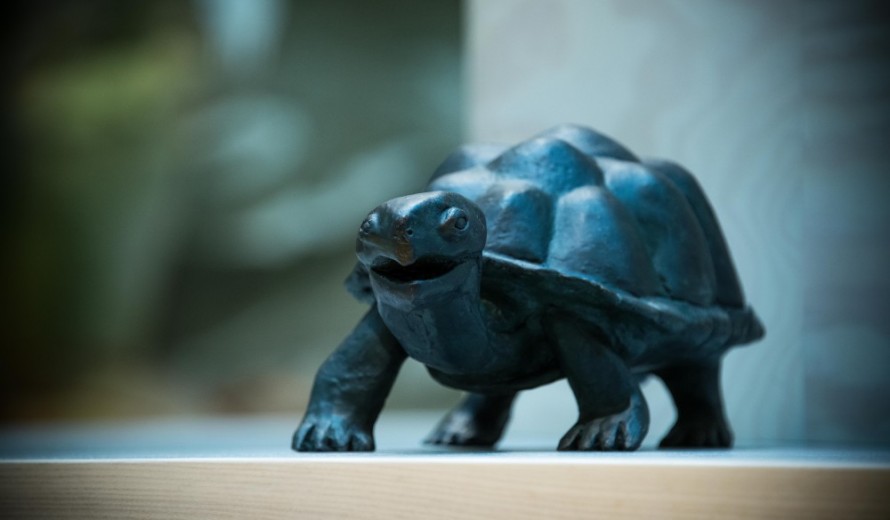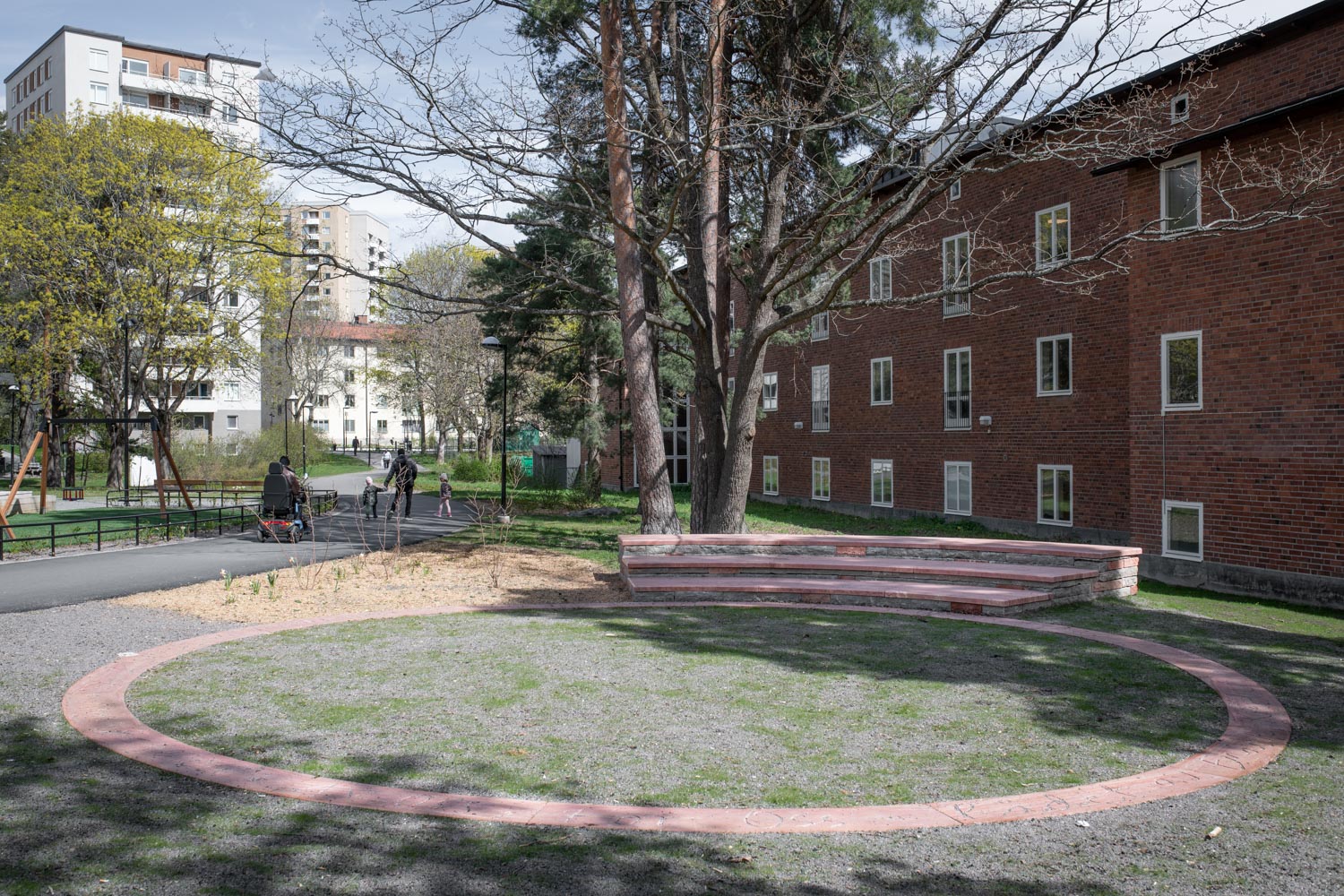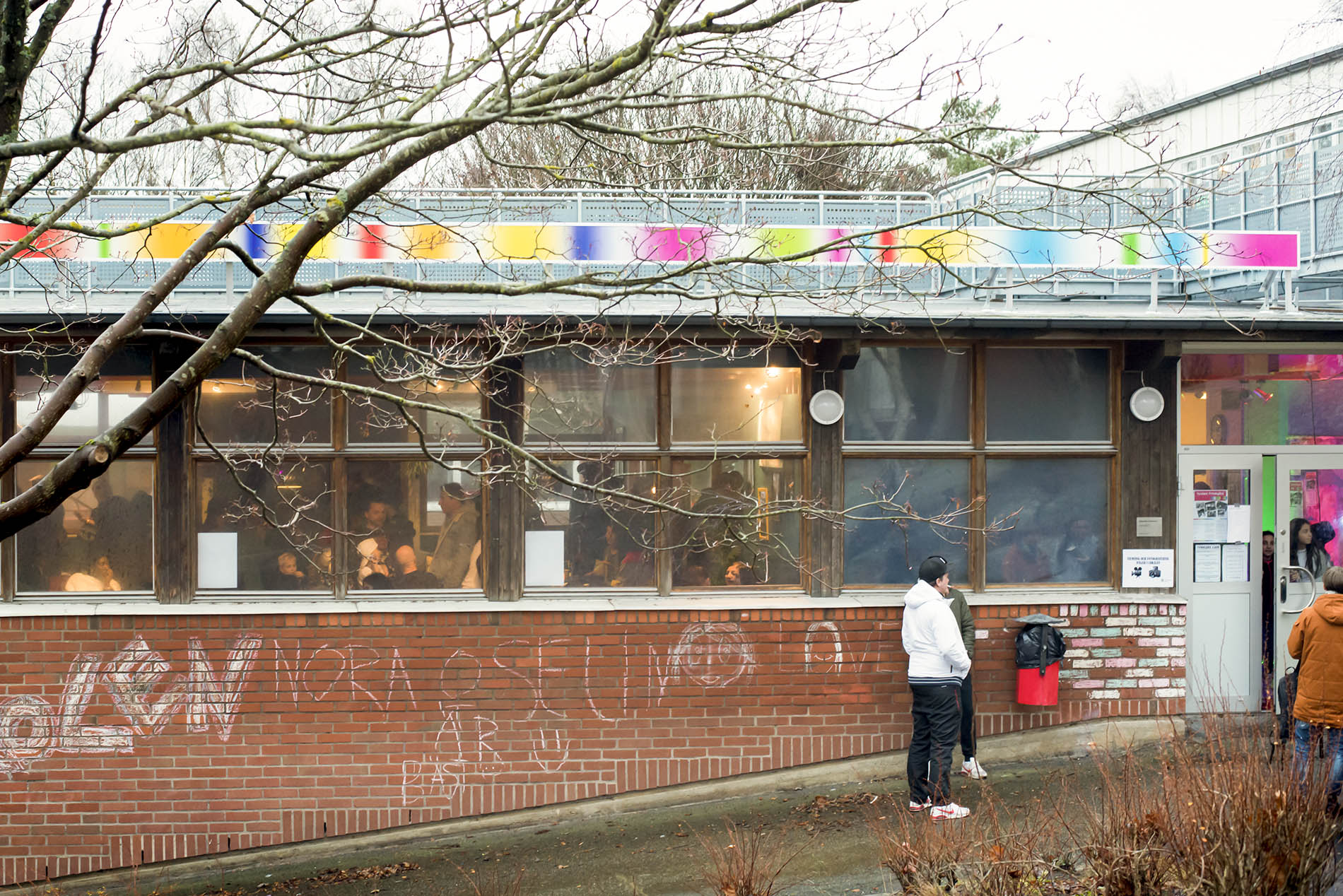Along Regnbågsallén, an approximately 300 metre-long walking and cycle path that cuts through the entire campus area at Luleå University of Technology, artist Johannes Heldén has created the artwork Sediment.













Sheet metal in beautiful, rusty Corten steel
The work comprises 16 large, laser-cut pieces of sheet metal, made of corten steel, which have been mounted on the short sides of the bicycle shelters along both sides of Regnbågsallén.
Drawing inspiration from Charles och Ray Eames’s short film Powers of Ten and science communicator Carl Sagan, the artistic intervention is a story, a journey that starts in the bowels of the earth, progresses through sediment and groundwater and via the thin biosphere and the surface of the planet, continues out into the stratosphere, the moon, the solar system, the Milky Way and towards the end of the known universe.
Visitors find themselves on a journey from the bowels of the earth towards the outermost limit of the universe.
On the laser-cut metal sheets the journey is depicted in graphic illustrations, ranging from almost abstract renditions to detailed drawings. Moving along Regnbågsallén, one finds oneself on a journey that zooms in and out from the earth’s bowels towards the outermost limit of the universe.
Curator Peter Hagdahl on Sediment
The starting point for the artistic intervention was to create a coherent narrative on the short sides of the bicycle shelters along the 300 metre-long Regnbågsallén. In the pictorial idiom of cartoons, the work would connect images that together could be interpreted in a predetermined sequence, creating a narrative.
Points of reference included the Altamira cave paintings, pictographic writing, ancient Egyptian tomb paintings, Trajan’s column, the Dresden Codex, Mixtec and Mayan manuscripts and the French Bayeux Tapestry, all of which are early examples of sequence art. Numerous contemporary artists have taken their points of departure in series or sequences, including Roy Lichtenstein, Agnes Martin, Öyvind Fahlström and Lena Svedberg – to name but a few.
On Johannes Heldén
Born in 1978 in Stockholm, Johannes Heldén is an artist, writer and musician. He works across several media with objects, text, image, music and animation. His main theme is the possible or the possibly impossible connection between human language and the unfathomable facts of the human condition – in the form of a starlit universe and the natural nature that surrounds us.
In depicting this theme, Johannes Heldén often uses idioms from science fiction and popular science. In his work, he pursues a fruitful, cross-artistic approach in which poetic, literary creation merges with a plastic, visual and even musical disposition. The imagination can branch out in multiple orbits around our eternal mystery, with the hope of, on some latitude, catching a glimpse of the incredibly beautiful.
Johannes Heldén’s art also possesses an interesting echo from the 1960s avant-garde and pluralistic, open view of art. This has resulted in an aesthetic expression in which contemporary digital and ecological discourses have taken sudden and unexpected long and shortcuts.
Find the artwork
Luleå Tekniska Universitet, Luleå, Sverige



